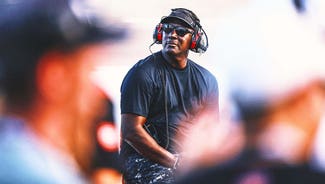
NASCAR, track researching crash
NASCAR and Daytona International Speedway officials plan a thorough review of the crash that left at least 28 people injured on Saturday afternoon at the track.
Kyle Larson was caught in a final-lap, 12-car accident that launched his car into the catch fence and sheared off its front end at the conclusion of the NASCAR Nationwide Series’ season-opening race. While Larson was able to climb from his car, his suspension and one tire went into the fence while a second tire appeared to sail over the fence and into the grandstands.
Officials say 14 people were treated on site and another 14 transported to local hospitals. As of Sunday evening, seven people remained at Halifax Health and all were stable.
By Sunday morning, DIS and NASCAR officials had repaired the fencing and poles in the area, opting not to replace the crossover gate overnight because of time constraints. They were ready to host the 55th running of the Daytona 500 on time Sunday afternoon.
But in reality, the real work is just beginning.
"Our thoughts and prayers are with those affected last night," said Steve O'Donnell, NASCAR senior vice president of racing operations. "It’ll be an ongoing process for us with the racetrack. We’ve got a (research and development) center up in Concord, NC, that specializes in looking at things like this. We’ll bring in the best and brightest and anything that we can learn will be put in place."
NASCAR officials will study the car at the R&D Center to determine why it broke apart the way it did and how the tire came off despite being tethered to the vehicle. They will also study all other aspects of the crash, from the on-track competition side of how the crash sparked when Regan Smith tried to block Brad Keselowski — a not uncommon move in racing — on the way to the finish and how the car went airborne to start with.
Included in that study will be the crossover gate and whether that area is a potentially vulnerable part of the way fences protect the fans at races.
It’s a project for which NASCAR can offer only general details as it is only hours after the incident and one that O’Donnell will not put a timetable on.
First there is the car itself to study. Larson’s car came apart dramatically, with debris spewing and a tire landing in the grandstands.
DIS president Joie Chitwood III said that while NASCAR will review how the car got into the 22-foot-high catch fence, he could confirm that "We transported individuals from both the lower level and upper level on the other side of that fence area."
O’Donnell said that, "For the most part, the car held up. The tethers held up."
But NASCAR is committed to learning as much as it can.
"Obviously we can always learn when a car gets up into the fence," he said. "That’s something we’ve got to take back, analyze everything that we can and we’ll do just that."
He said the sanctioning body would consider whether that was the best practice going forward based on what it found. The review will be massive in scope, incorporating both the track and competition elements. As to the latter, O’Donnell said moves such as blocking on the track are constantly under review.
"Not new to superspeedway racing," he said. "We've been racing here for 55 years. We'll always analyze every race and see what could be different and we'll put that in place again."
NASCAR seems committed to making sweeping changes if research finds it necessary.
While O’Donnell could not say who would be involved in the study of the crash, he pointed out that the sanctioning body has been involved with in-depth studies in the past, such as in developing the SAFER barrier, and has the ability to work with top experts.
With all of those resources at its disposal, NASCAR will not rush through the process. When Dale Earnhardt died in a last-lap crash in the 2001 Daytona 500, NASCAR officials put together an expert team and spent months not only studying the crash itself, but testing potential changes. It was August of that year when it announced sweeping changes.
It introduced the SAFER barriers in 2002, had them at all tracks by 2005 and in 2007 brought out the Car of Tomorrow, with many of the changes focused on enhanced safety. Along the way, NASCAR also implemented immediate changes in instances where prolonged testing was not necessary, such as requiring all drivers to wear the HANS (head and neck support) device in October of 2001.
Now the research process turns to this crash.
"That’s what we do is each and every day we look at safety," O’Donnell said. "So we’ll bring in whoever has ideas — the best and brightest. We work with a lot of the top universities, we’ve done that with the SAFER barrier so we’ll continue to do that but no timetable."
Whatever the study finds, he seems committed to implementing change — even if it means a major change like removing crossover gates from tracks.
"If that’s what we thought the experts said we should do, we certainly would take a look at it," he said. "But I think it’s way too soon to make that kind of statement without really studying exactly what happened."
As both NASCAR and Daytona reacted to the crash and began to plan for the future, each made it clear that fan safety was paramount in the study.
What would O’Donnell tell any fan nervous about attending a race now?
"I would tell them that the fans are our first priority. Obviously we want everybody to be safe at an event. We've talked to the speedway. We're confident in what's in place at today's event. Certainly (we’re) still thinking about those affected, but we're confident to move forward."

